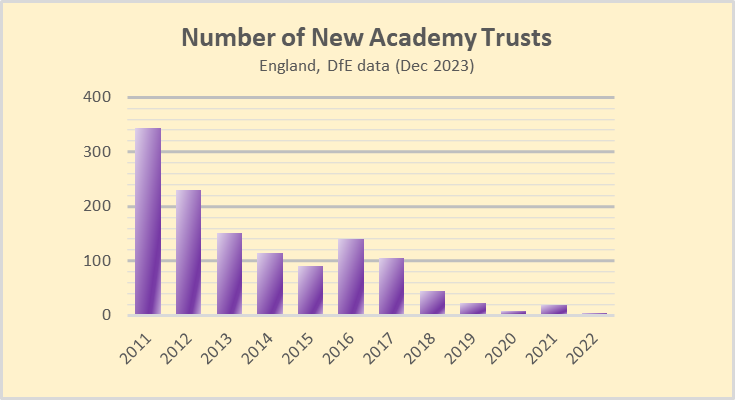New Academy Schools: The state of play in Nine Graphs
In 2011, the academy schools programme took off, but where are we now?
It has slowed, but that is hard to see from the overall numbers… So, let’s dive deeper into academy schools and academy trusts and what’s happened since Tony Blair opened the first academy in September 2002.
1. Academy Schools Today
During the noughties, there were no primary or special school academies and less than 200 secondary academies. From 2011 onwards, changes of government policy changed that and the number of academies (of all three types) rose steeply. There are now over:
- 6800 primaries that have become an academy
- 2300 secondaries that have become an academy
- 380 special schools that have become an academy
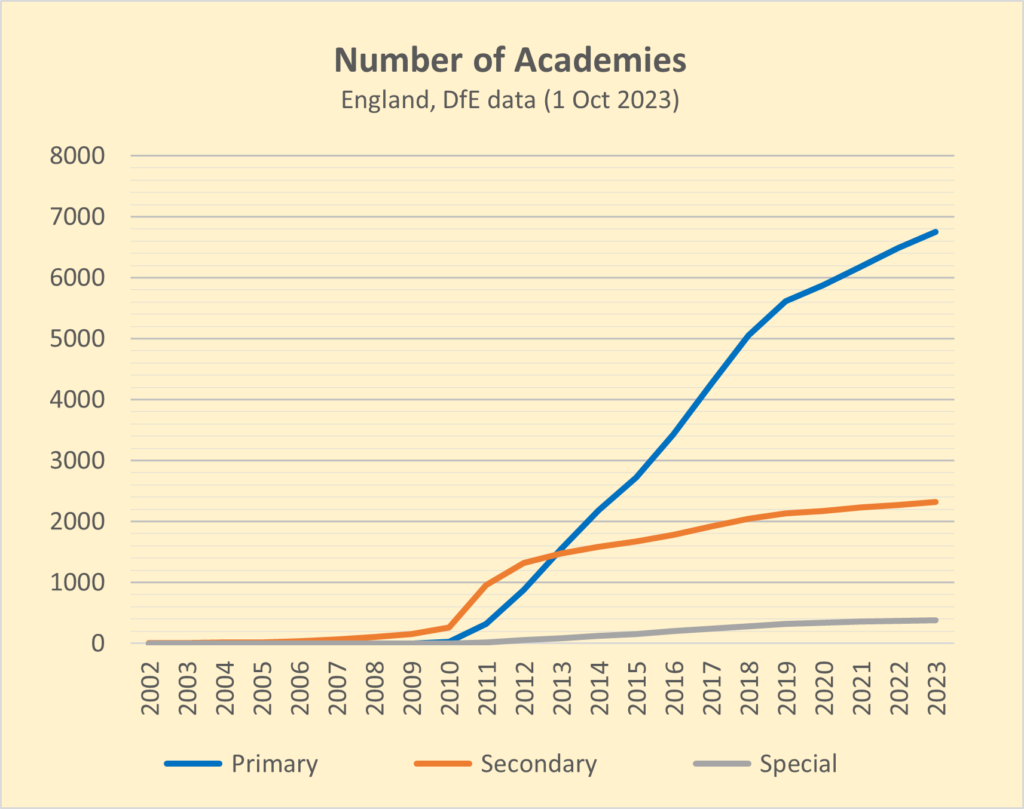
2. Primary Academy Schools
Ministers wanted all schools to be academies by 2022 (Rt Hon Nicky Morgan) and then by 2030 (Baroness Barran), but both plans hit the rocks. So, it’s unsurprising that primary conversions have slowed (even before Covid).
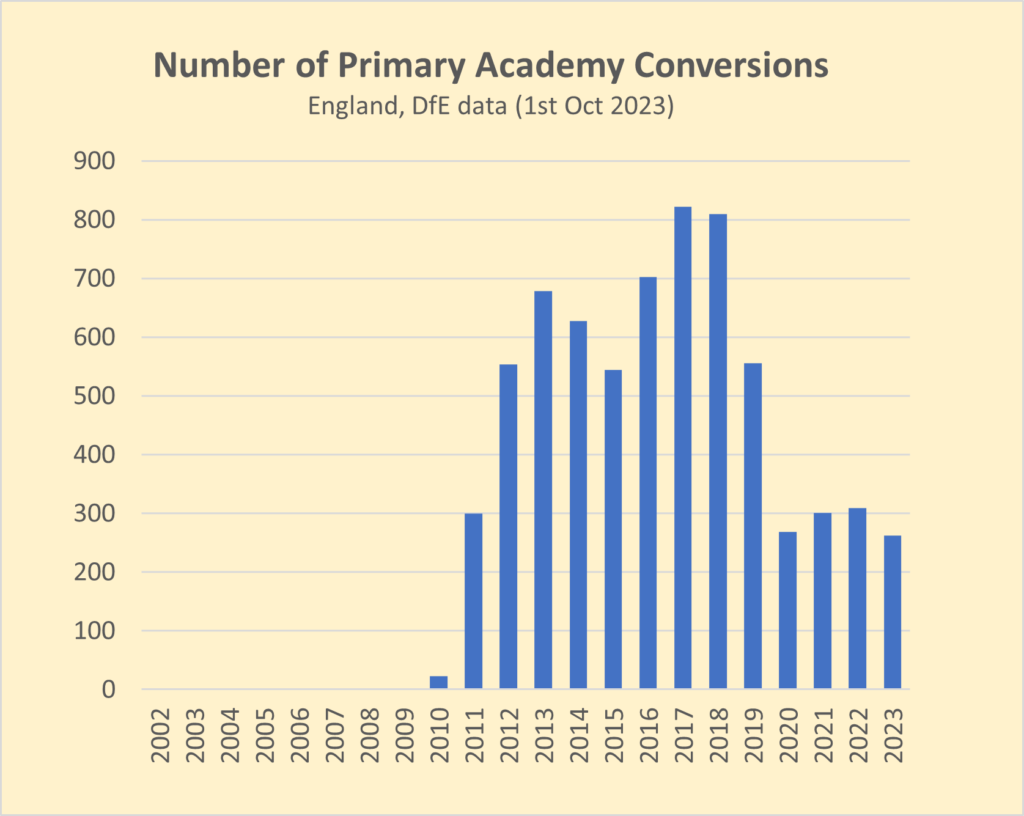
Notes
- 2023 is only part year data – so the total will be higher.
- Some academies have changed trusts. If so, the data shows when they last became a new academy (rather than when they first became an academy).
- Includes convertor and sponsored academies. It does not include free schools.
3. Secondary Academy Schools
The secondary peak was 6 years before the primary & special school peaks. During the secondary peak in 2011 and 2012, almost a third of secondary schools converted in a two year period. This represented about a million pupils no longer in a local authority school.
There are now only 20% of secondaries that remain local authority (LA) maintained, so it’s understandable that conversions have slowed to a few dozen a year.

4. New Special School Academies
The special school picture is almost identical to primary:
- A later start
- Highest numbers in 2017.
- A more recent slowdown in the number of new academies.
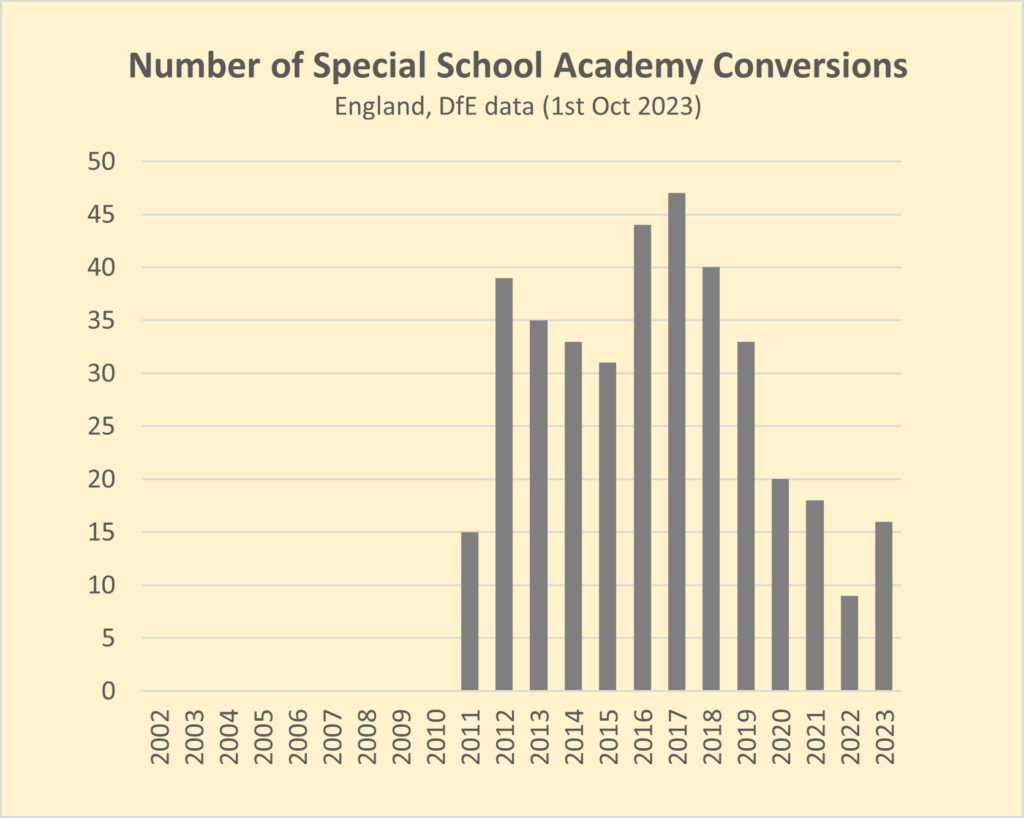
5. The Pipeline of Academy Schools
What happens next? Will the lower numbers continue?
Interestingly, there are 767 schools in the DfE ‘pipeline.’ These are schools that are in the process of becoming an academy and the majority are primary. This suggests that future growth will continue to be mostly in the primary phase.

6. Who will convert in future?
The number of secondaries left to convert is in decline. Some areas have no secondaries left to convert (e.g. Hull, Middlesboro, Doncaster). Of the remaining LA maintained secondaries, some have chosen to stay maintained (e.g. King Edward VII in Sheffield where a campaign stopped forced academisation in 2023).
Therefore, it looks like any growth would mostly come from the primary phase, where over half of the 16,800 schools remain LA maintained:
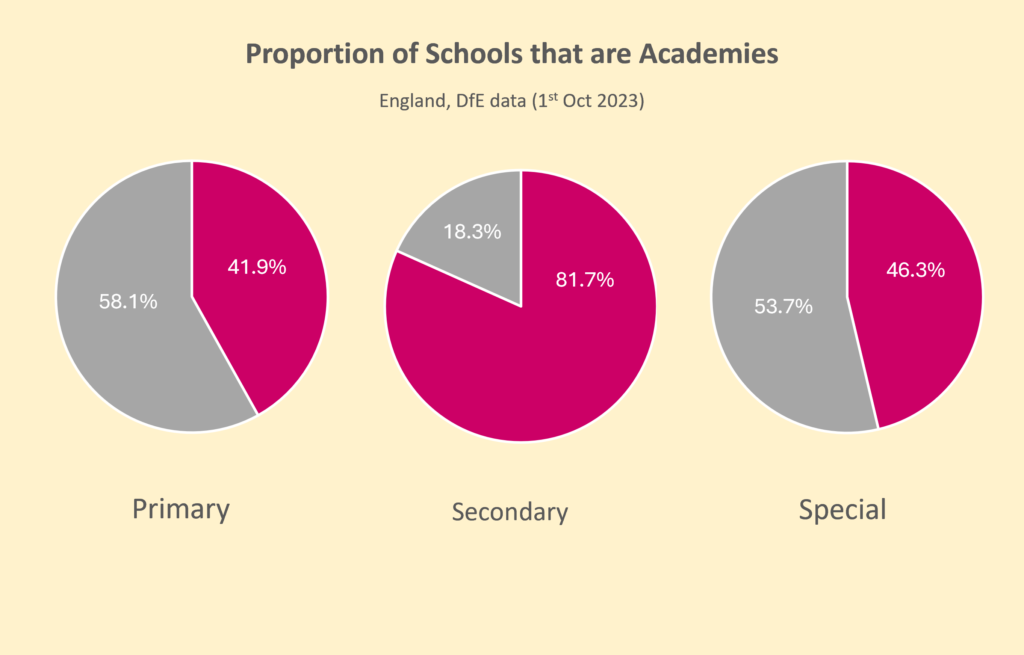
7. What about Trusts?
This graph shows the size of 1300+ academy trusts (all of them apart from the biggest 8 trusts which fell off the end of the graph – more on them later).
The most common trust size is 2 schools and 55% of trusts have 5 or fewer academies. Whilst the huge trusts pop up in the news more often, there are only a few dozen, whereas there are over 1000 trusts with 10 or fewer academies.
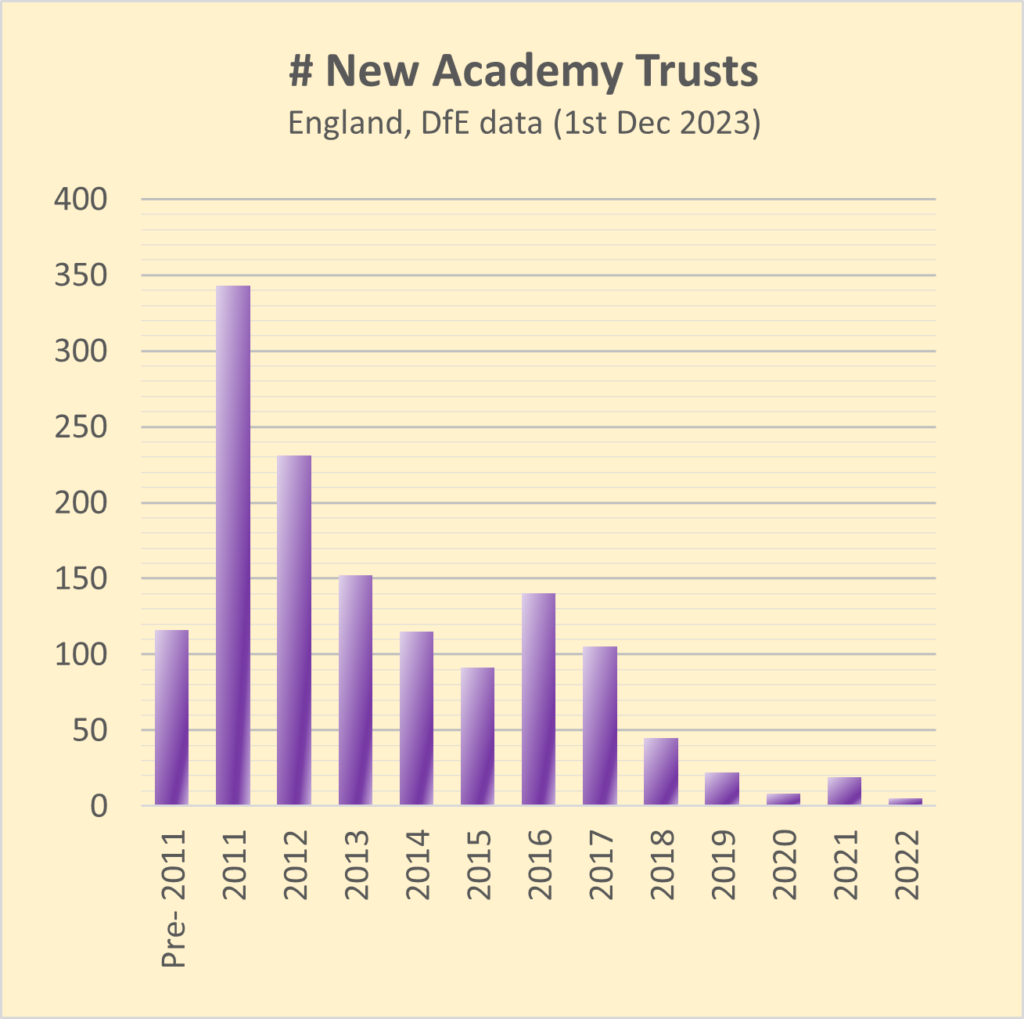
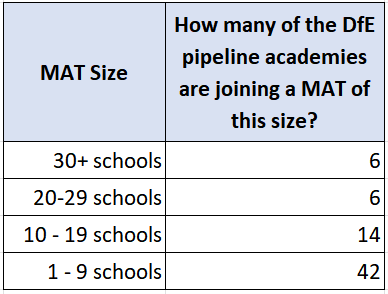
Based on the schools in the current pipeline, it looks like many will join small or medium sized trusts. However, the DfE pipeline only names trusts for sponsored academies (so omits convertor academies). Therefore, it is a narrow data set.
It will be interesting to see how the size of trusts change over the next five years (e.g. will more single-academy trusts merge into other small or medium trusts, will medium sized trusts decide to stick within their region (and avoid expensive four hour round trips between HQ and far-flung schools) or expand more widely?)
8. The Ten Biggest Multi-Academy Trusts in 2023
Whilst there are not many huge trusts, these trusts are still resolutely growing. This brings us onto the biggest trusts.
We could rank by:
- Number of schools in the trust
- Number of pupils in the trust.
Here’s the top ten based on the number of schools in the trust:
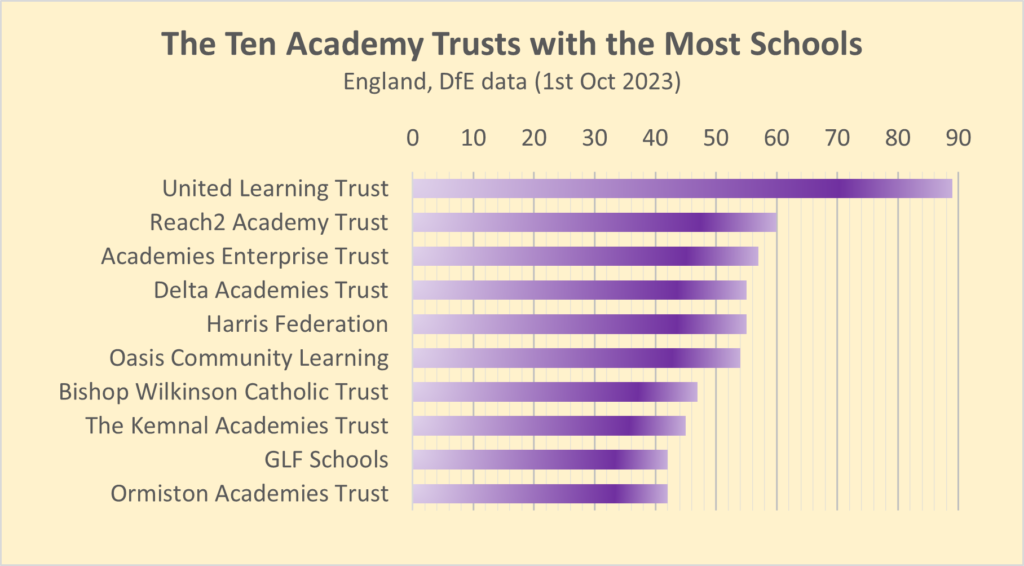
9. Small Academy Trusts
There are new trusts forming but it’s only a handful a year. In 2022, there were only 5 new trusts formed.

So, with a few exceptions, the days of starting your own MAT are over. That means that schools academising will join an existing trust (rather than starting their own).
10. What might affect conversions to become an Academy School?
- Whether schools convert to try to avoid being closed down as falling pupil numbers bite in both primary and later secondary schools.
- Whether tighter school funding makes schools consider joining a MAT.
- Whether Local Authorities set up their own academy trusts in future.
- Whether any new Ofsted framework means more schools face forced academisation (a new .
- Policies of the UK Government after the 2024 election.
More to read
If you enjoyed this article, you might also like our overview of school exclusions or, for improving outcomes for vulnerable children, our guide to Children in Care, written in partnership with national charity Become. Alternatively, click here to see all articles.
References
All data is from the Department for Education academy data with occasional data from the DfE School Census (e.g. overall number of primary schools).
Get in touch
Have a question? Think we could help you? Please contact us to discuss how we might help you.
Drop us an email or give us a call
director@9000lives.org
0788 42 42 719

